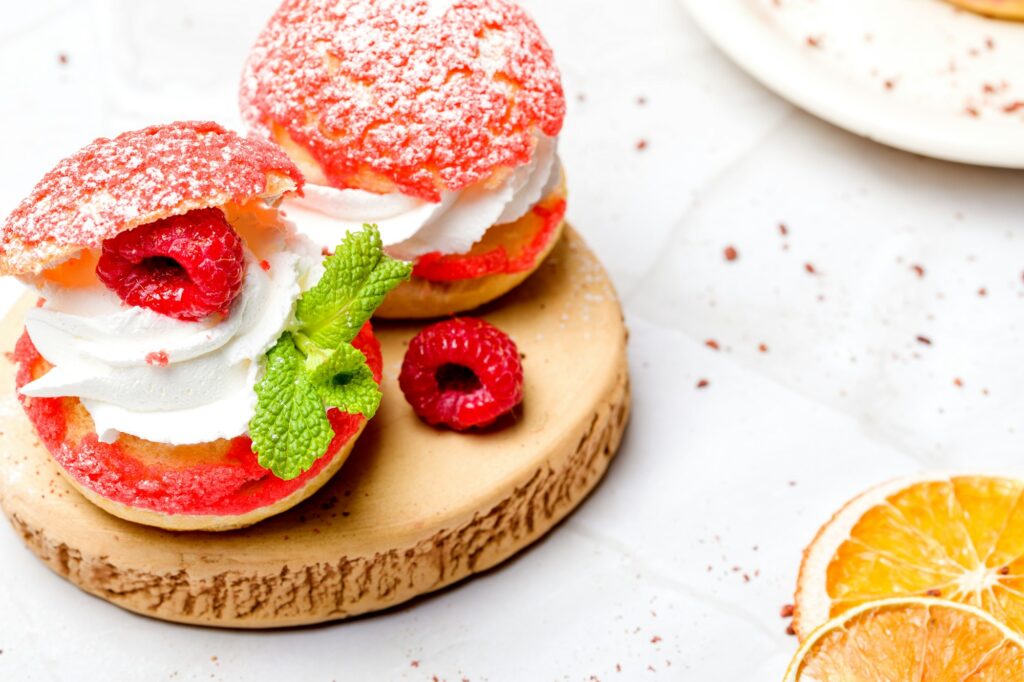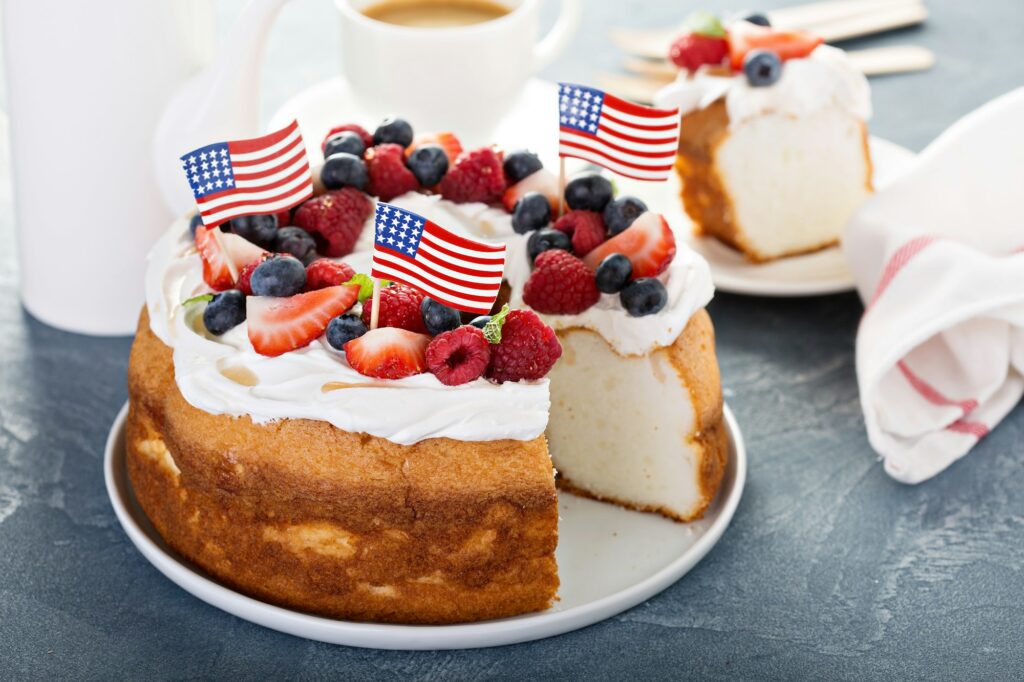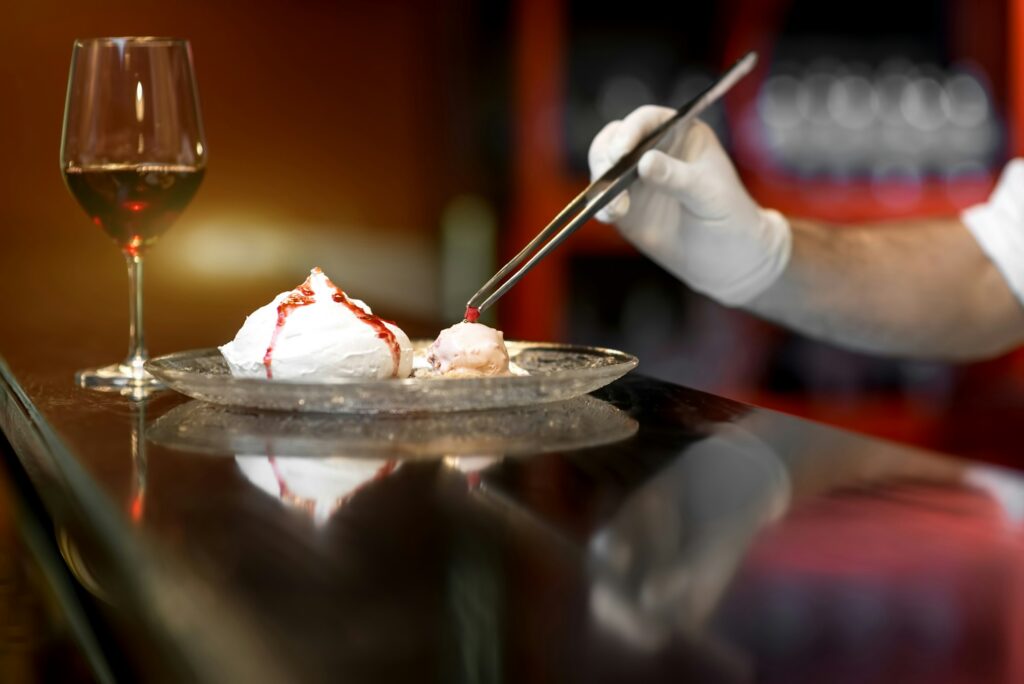In the realm of desserts, few elements are as versatile and crucial as dessert shells. These foundational pieces are not just about aesthetics; they play a pivotal role in enhancing the overall sensory experience of a dessert. The right cake base can elevate a simple filling to new heights, turning an ordinary dessert into a masterpiece of flavors and textures. From hosting an elaborate dinner party to enjoying a quiet evening at home, dessert shells add a touch of sophistication and elegance, making any occasion special. This guide will navigate through the art and science of selecting, crafting, and filling dessert shell cakes, ensuring your creations captivate both the eyes and the palate.
Popular Types of Dessert Shell Cakes
Sponge Cake: The Airy Dessert Shell Cakes
The quintessential sponge cake is renowned not just for its delightful light and airy texture, but also for its remarkable versatility in the world of desserts. This cake’s inherent ability to absorb syrups without compromising its structure makes it an ideal choice for a wide array of dessert shells. Here are key points that underscore its suitability:
Perfect Moisture Balance:
The sponge cake strikes a perfect balance between moisture and firmness, ensuring that it can soak up syrups and essences, thereby elevating its flavor profile without becoming soggy. This characteristic is crucial for layered desserts and pastries that demand both taste and texture integrity.
Complementary Base for Fillings:
-
- Light fruit fillings: Its subtle sweetness enhances the fresh and zesty notes of fruit fillings, making it a summer favorite.
- Rich creams: Sponge cake pairs beautifully with decadent creams and mousses, offering a contrast that’s both satisfying and elegant.
Culinary Canvas for Creativity:
Beyond its function as a base, sponge cake invites culinary creativity. Bakers can infuse the batter with various flavorings—vanilla, almond, or citrus zest—to complement the chosen fillings, creating a harmonious dessert experience.
Baking Tips for Perfection:
-
- For an even lighter texture, ensure eggs are at room temperature before whisking.
- Gentle folding of the flour is key to maintaining the airiness achieved during the whisking process.
- A properly preheated oven is crucial for achieving that perfect rise and avoiding a dense texture.
Angel Food Cake: The Light Dessert Shell Cakes
Angel Food Cake, known for its no-fat composition, provides a lighter alternative for dessert shells. This cake’s unique texture comes from whipped egg whites, creating a fluffy body that pairs well with fresh fruits and light custards. Its low-fat content is particularly appealing for those seeking a lighter dessert option, making it a frequent choice for trifles and layered desserts.
Pound Cake: The Dense Dessert Shell Cakes
Gluten-Free Cakes: The Healthy Dessert Shell Cakes
Inclusivity in dessert options is important, and Gluten-Free Cakes ensure that everyone can enjoy delicious treats without concern. Utilizing alternative flour blends, such as almond flour or rice flour, these cakes cater to those with dietary restrictions without compromising on flavor or texture. Gluten-free cakes can be adapted to any dessert shell recipe, providing a safe and delicious option for all guests.
Chocolate Cake: The Rich Dessert Shell Cakes
Each type of cake offers unique attributes that can be matched with specific fillings and decoration styles to create a harmonious dessert. Understanding the characteristics of these cakes is key to selecting the perfect base for your dessert shells, ensuring your creations are both beautiful and delicious.
Crafting the Perfect Dessert Shell
Creating the perfect dessert shell is both an art and a science. It requires precision in baking and a creative touch in choosing the right cake for the desired shell. Here are some techniques and tips to ensure your dessert shells are not only flavorful but also have the ideal texture and strength to hold your chosen fillings:
Baking Techniques:
The key to a perfect dessert shell lies in the baking technique. For sponge and angel food cakes, ensuring even air distribution through proper folding of ingredients can make all the difference. A gentle touch preserves the air bubbles necessary for their signature light textures.
Flavorful Foundations:
Infusing your cakes with subtle flavors can elevate the overall taste of your dessert shells. Consider adding citrus zest to your sponge cake batter or a hint of vanilla to your chocolate cake mix. These subtle enhancements can amplify the sensory experience of your desserts.
Structural Integrity:
For desserts that require a sturdy base, such as trifles or layered desserts, pound cake is an excellent choice. Its dense structure can support the weight of fillings and additional layers without compromising its form or becoming overly soggy.
Adaptability for Dietary Restrictions:
When crafting gluten-free dessert shells, selecting the right blend of flours is crucial. Mixes that include almond flour or coconut flour not only provide the necessary structure but also add a depth of flavor that complements a variety of fillings.
Creative Filling Ideas for Dessert Shells
Filling your dessert shells transforms them from simple cakes into exquisite desserts. Here’s how to match the filling with the type of cake used for the shell for a harmonious blend of flavors and textures:
- For Light and Airy Shells (Sponge and Angel Food Cakes): Opt for fillings that mirror the cake’s delicate texture. Mousses, whipped cream, and citrus curds offer a light, airy complement to these types of shells.
- For Denser Shells (Pound and Gluten-Free Cakes): These shells can handle richer, heavier fillings. Chocolate ganache, cream cheese mixtures, or caramel-infused creams add a luxurious richness that pairs well with the cake’s denser texture.
- Fruit Fillings: Fresh or macerated berries, layered between slices of any cake type, offer a refreshing contrast to the sweetness of the cake, making for a balanced dessert experience.
- Innovative Twists: Don’t be afraid to experiment with non-traditional fillings. A savory-sweet combination, such as a bacon-infused maple cream, can offer an unexpected but delightful twist to a traditional dessert shell.
By selecting the right fillings and ensuring they complement the dessert shell both in flavor and texture, you can create truly memorable desserts that will impress any guest.



